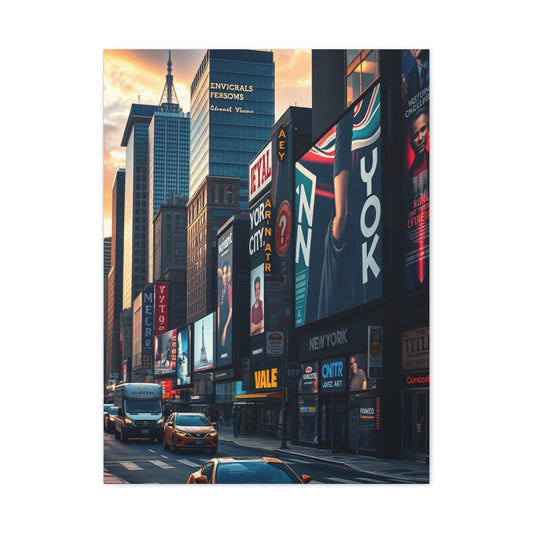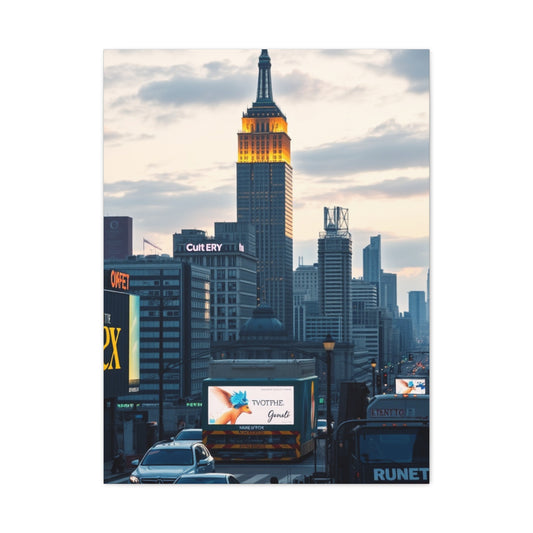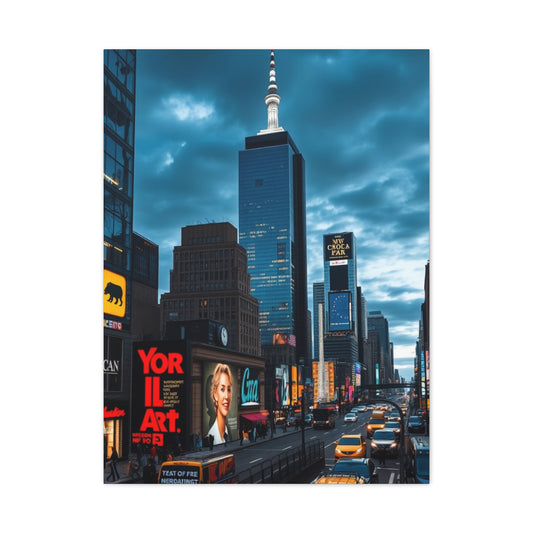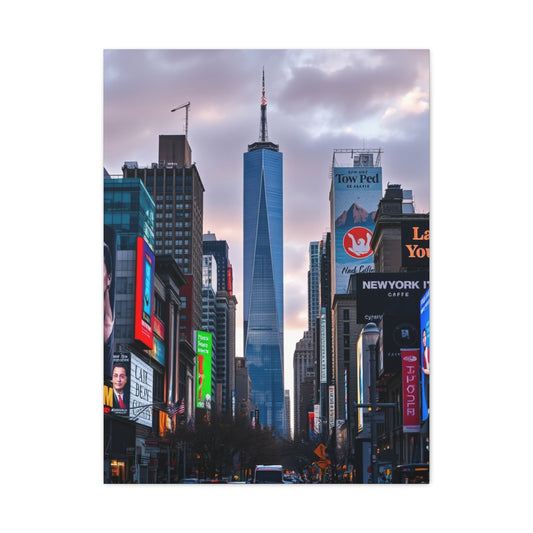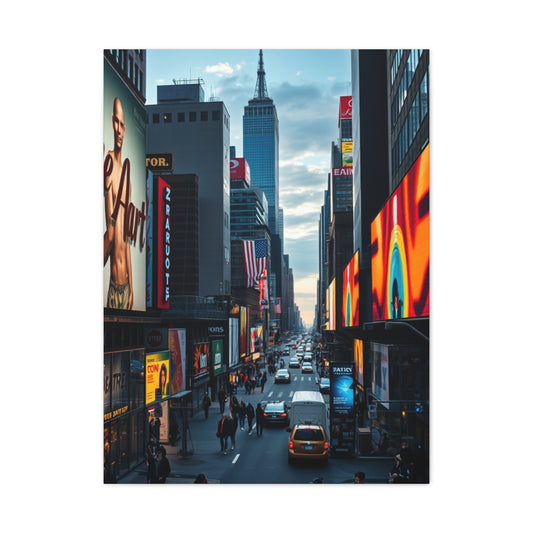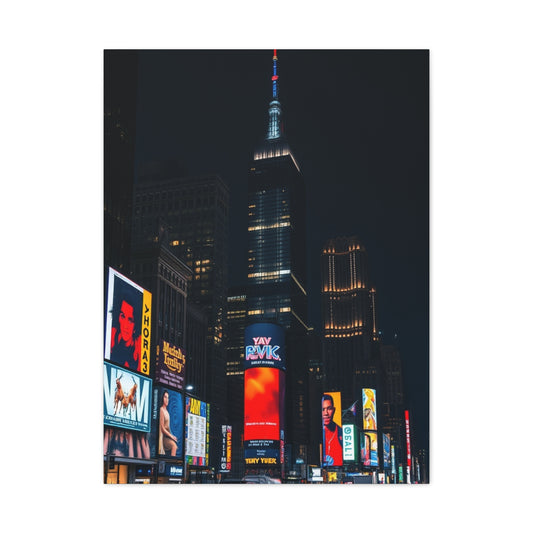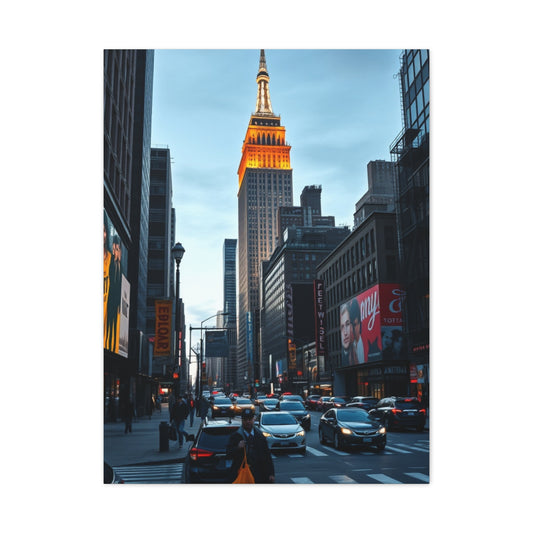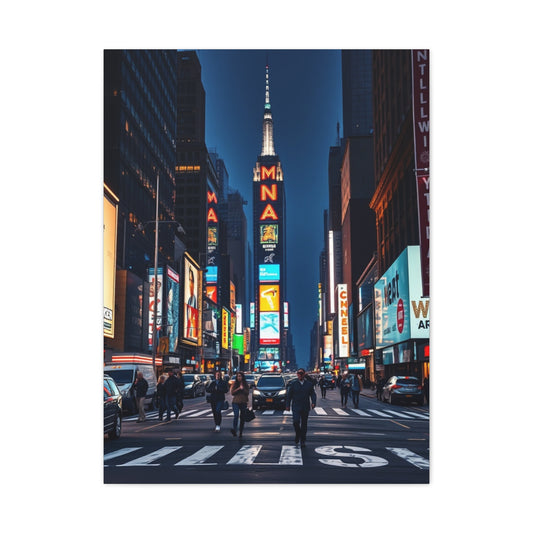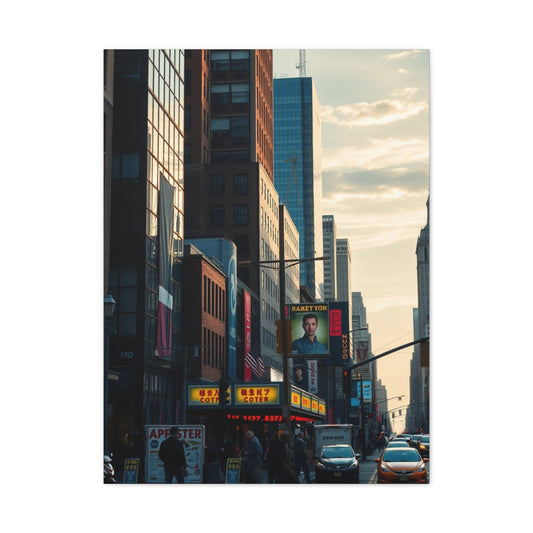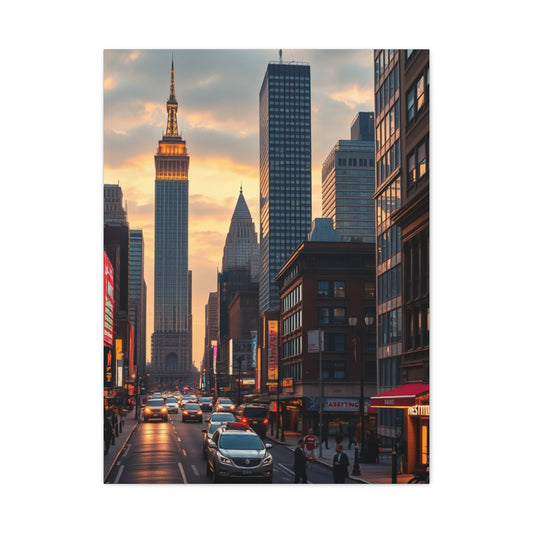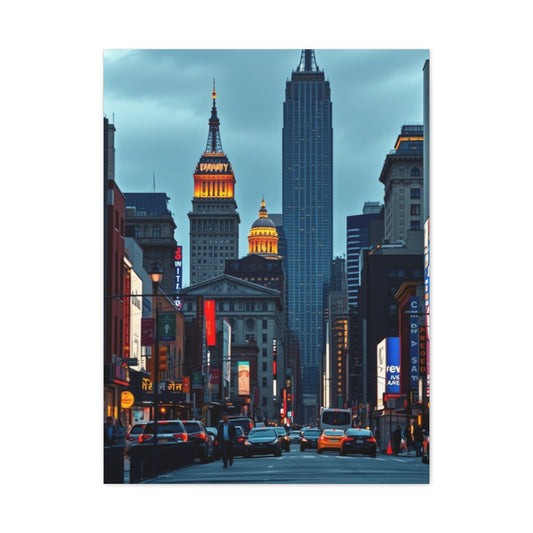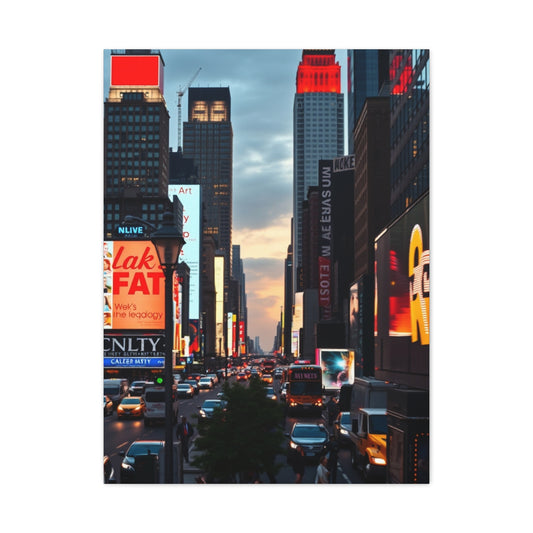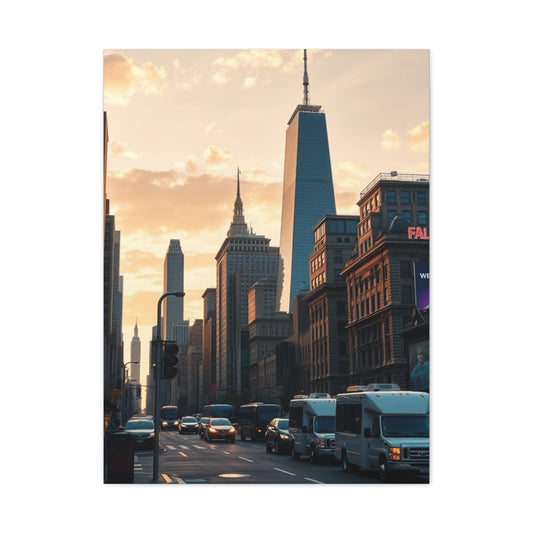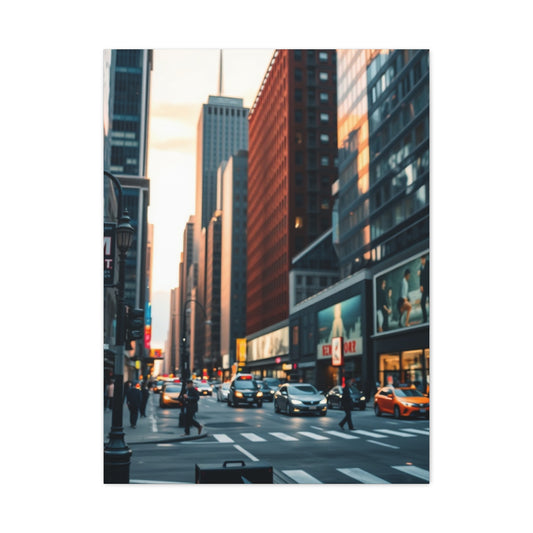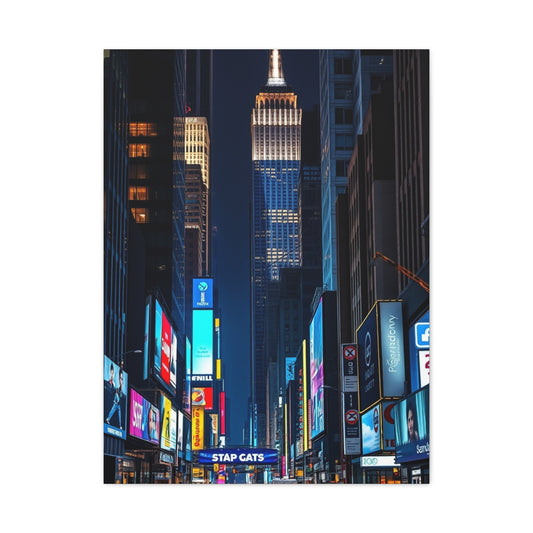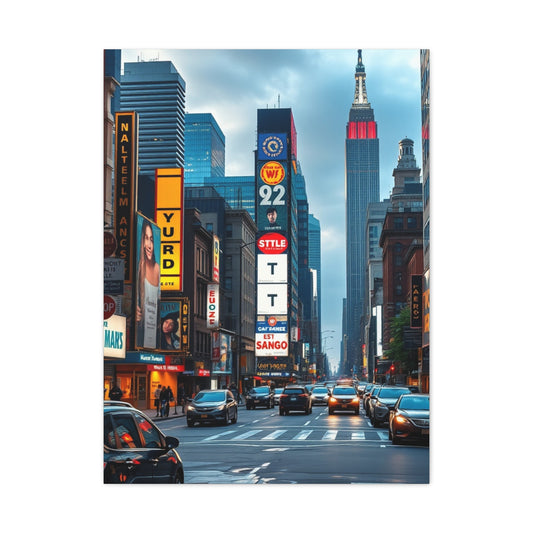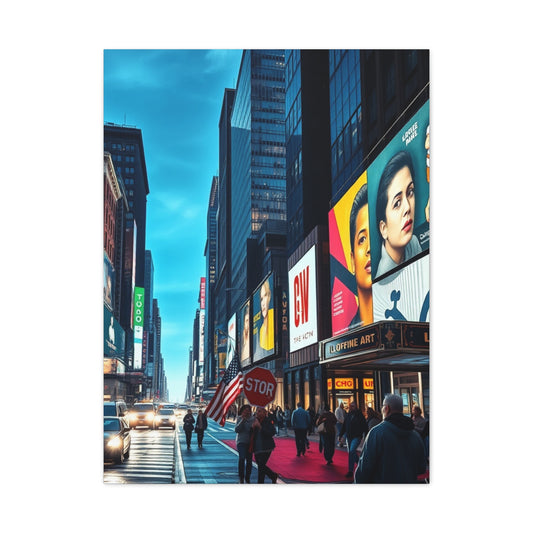Breathtaking Cityscape Wall Art Pieces That Will Touch Your Soul
Urban landscape artwork has become one of the most captivating design trends in modern interiors. More than just decoration, cityscape wall art speaks to the human spirit—it reflects our connection to bustling streets, iconic skylines, and the architectural wonders that define the heartbeat of a city. Whether displayed in a cozy living room, a sleek office, or a trendy café, these artworks serve as windows to vibrant destinations around the globe. They invite us to pause, imagine, and even relive memories of places that have touched our lives.
The beauty of cityscape canvas prints lies not only in their visual appeal but also in their ability to stir emotion. They embody ambition, culture, and movement, reminding us of the relentless energy that flows through metropolitan life. For some, a city skyline represents opportunity and dreams; for others, it may evoke nostalgia for a beloved hometown or a cherished travel memory. Regardless of personal interpretation, these pieces go far beyond décor—they create an atmosphere.
Selecting the right urban landscape artwork is like embarking on a journey through global architecture and design. Every print tells a story, from shimmering skyscrapers to historic bridges and glowing avenues. To help you explore this fascinating world, here are five breathtaking cityscape wall art pieces that will captivate your soul and transform your interior space into something unforgettable.
Few cityscapes can rival the sheer magnificence of New York City illuminated under the night sky. A wall art piece depicting Manhattan’s towering skyscrapers against a glowing horizon exudes energy and sophistication. The Empire State Building and One World Trade Center often dominate these views, standing as symbols of ambition and progress. This artwork brings vibrancy and movement into any room, making it ideal for offices, living areas, or modern lofts. Beyond its aesthetic value, it serves as daily inspiration, reminding viewers of the limitless opportunities a bustling city represents.
Paris, the city of romance, continues to enchant through its timeless landmarks. A cityscape featuring the Eiffel Tower, perhaps at dusk with the sky awash in shades of pink and gold, radiates charm and elegance. This artwork instantly infuses interiors with a sense of sophistication and allure. For those who dream of strolling along the Seine or dining in a Parisian café, such a canvas becomes a portal to cherished fantasies. The piece is especially fitting for bedrooms, lounges, or intimate dining spaces, where it enhances the mood with an aura of passion and beauty.
London’s skyline tells a story of both tradition and innovation. From the grandeur of Big Ben and the Houses of Parliament to the modern silhouette of The Shard, a London-inspired wall art piece blends historical richness with contemporary flair. The River Thames winding through the city adds fluidity to the composition, creating balance within the design. This type of artwork resonates with individuals who appreciate culture, history, and progress all in one frame. It fits seamlessly into both classic and minimalist interiors, offering a versatile choice for global-minded homeowners.
Dubai is often described as the city of the future, where towering skyscrapers rise from the desert in dazzling brilliance. A cityscape print showcasing landmarks such as the Burj Khalifa or the Burj Al Arab captures the essence of ambition and innovation. The shimmering lights of Dubai’s skyline make for an awe-inspiring centerpiece in modern interiors. For individuals drawn to luxury, dynamism, and architectural boldness, this piece symbolizes progress and limitless vision. It is particularly striking in large open spaces, where its grandeur can be fully appreciated.
Mediterranean Coastal Paradise Artwork
The enchanting Mediterranean coastal paradise artwork presents a mesmerizing visual narrative that captures the quintessential beauty of Greek island architecture. This spectacular piece showcases crystalline azure waters stretching endlessly toward the horizon, creating a sense of infinite tranquility that immediately draws the observer into its serene embrace. The composition features traditional whitewashed buildings with distinctive cobalt blue rooftops, their geometric forms creating a harmonious contrast against the natural landscape.
Verdant vegetation cascades gracefully down terraced slopes, while pristine ivory clouds drift lazily across an expansive cerulean sky. The architectural elements include charming residential structures with traditional arched doorways, shuttered windows that speak of Mediterranean lifestyle, and elegant balconies that overlook the stunning coastal panorama. Stone pathways wind between buildings, their weathered surfaces telling stories of countless footsteps throughout generations.
The interplay of light and shadow creates dramatic visual depth, with the gallery's overhang casting intricate patterns on adjacent walls. This remarkable piece transforms any guest room into a sophisticated sanctuary that inspires wanderlust and appreciation for Mediterranean culture. Office environments benefit tremendously from this artwork's ability to reduce stress and promote creative thinking through its calming influence.
The artistic composition employs masterful use of perspective, drawing viewers deeper into the scene through carefully positioned architectural elements. Color harmonies between the natural azure waters and man-made blue accents create visual unity that pleases the eye while maintaining authentic Mediterranean aesthetic principles. This piece represents more than mere decoration; it serves as a portal to one of Europe's most beloved coastal destinations.
Coastal Villa Retreat Visualization
The coastal villa retreat visualization presents an idyllic representation of Mediterranean residential architecture nestled within a dramatic hillside setting. This captivating artwork showcases a collection of charming residences painted in soft blush tones and pristine white, their distinctive architectural features creating a rhythmic pattern across the composition. Each structure displays unique characteristics, from intimate terraced gardens to inviting doorways that suggest warm hospitality within.
Blooming flora adorns the landscape, with vibrant crimson blossoms creating striking focal points against the neutral building palette. The atmospheric conditions captured in this piece suggest the magical golden hour, when warm sunlight bathes the entire scene in a romantic glow that enhances every architectural detail. Wispy cloud formations drift across the expansive sky, their ethereal presence adding movement and dynamism to the otherwise tranquil scene.
Window treatments vary throughout the composition, with some featuring traditional wooden shutters while others display decorative ironwork that exemplifies Mediterranean craftsmanship. Rooftop terraces provide outdoor living spaces that overlook the stunning coastal vista, suggesting a lifestyle that embraces both indoor and outdoor living harmoniously. The terraced landscape design maximizes the hillside topography while creating intimate garden spaces between residential units.
This artwork excels in bedroom environments where its peaceful energy promotes restful sleep and pleasant dreams. Drawing rooms benefit from the piece's conversation-starting appeal, as guests often find themselves captivated by the intricate details and romantic atmosphere depicted. The warm color palette complements various interior design schemes while maintaining its distinctive Mediterranean character.
Architectural historians appreciate this piece for its accurate representation of traditional Greek island construction methods, including the strategic positioning of buildings to maximize ocean breezes while providing protection from harsh weather conditions. The artwork serves as both aesthetic enhancement and cultural preservation, maintaining visual records of architectural traditions that have evolved over centuries.
Terraced Community Stairway Scene
The terraced community stairway scene presents a fascinating exploration of vertical urban planning within a Mediterranean coastal setting. This remarkable artwork captures the intricate network of stone staircases that connect various residential levels, creating a maze-like pattern that invites exploration and discovery. The composition showcases how communities have adapted to challenging topographical conditions by developing ingenious architectural solutions that maximize available space while maintaining aesthetic appeal.
Residential structures display remarkable diversity in their design approaches, with some featuring expansive balconies that serve as outdoor extensions of interior living spaces. Decorative planters containing vibrant scarlet flowers add natural beauty to the urban environment, demonstrating how residents personalize their immediate surroundings. The stonework throughout the scene exhibits masterful craftsmanship, with each step carefully positioned to create safe passage while maintaining visual harmony.
Building materials reflect traditional Mediterranean construction practices, utilizing local stone and lime-based plasters that have proven their durability across generations of coastal weather exposure. Window designs vary from simple rectangular openings to elaborate arched configurations, each contributing to the overall architectural rhythm that characterizes this unique community layout. Rooftop gardens and terraces provide additional outdoor space while contributing to the area's overall environmental sustainability.
The lighting conditions captured in this piece suggest either early morning or late afternoon illumination, when angled sunlight creates dramatic contrasts between illuminated surfaces and deep shadows. This chiaroscuro effect enhances the three-dimensional quality of the architectural forms while adding emotional depth to the overall composition. The warm earth tones of the stonework contrast beautifully with the cool blue sky, creating a balanced color scheme that remains pleasing throughout extended viewing periods.
Living room installations of this artwork create engaging focal points that encourage contemplation of urban planning principles and community design philosophies. Office environments benefit from the piece's ability to stimulate creative problem-solving through its demonstration of innovative architectural solutions. The artwork serves as inspiration for those interested in sustainable community development and traditional building practices.
Monochromatic Bridge Infrastructure Art
The monochromatic bridge infrastructure artwork presents a dramatic interpretation of urban engineering achievement through the lens of artistic expression. This compelling piece utilizes a sophisticated black and white palette to emphasize structural elements while creating timeless visual appeal that transcends contemporary design trends. The composition showcases massive suspension cables stretching across the frame, their geometric precision contrasting with the organic curves of the river below.
Reflective water surfaces create mirror-like duplications of the bridge structure, effectively doubling the visual impact while adding depth and complexity to the overall composition. Supporting towers rise majestically from the water, their monumental scale suggesting human engineering capability and architectural ambition. The interplay between light and shadow across metallic surfaces creates textural variety that maintains viewer interest throughout extended observation periods.
Urban skyline elements provide contextual background information while establishing the bridge's role within the larger metropolitan infrastructure network. Building silhouettes create rhythmic patterns against the pale sky, their varying heights suggesting a diverse and dynamic urban environment. The atmospheric conditions depicted suggest either dawn or dusk, when natural lighting conditions create optimal contrast for architectural photography.
Transportation elements including vehicles and pedestrian pathways indicate the bridge's functional purpose while adding scale references that help viewers understand the structure's massive proportions. Safety barriers and decorative elements demonstrate attention to both practical requirements and aesthetic considerations in infrastructure design. The overall composition achieves perfect balance between documentary accuracy and artistic interpretation.
Drawing room installations benefit tremendously from this artwork's sophisticated aesthetic appeal and conversation-starting potential. The monochromatic palette allows for easy coordination with existing interior design schemes while maintaining strong visual impact. Age-diverse households appreciate the piece's universal appeal, as both younger and older viewers find different aspects to admire and discuss.
The artwork serves multiple purposes beyond mere decoration, functioning as inspiration for engineering students, urban planners, and anyone interested in infrastructure development. Historical significance emerges through the piece's documentation of architectural achievement, preserving visual records of human engineering accomplishment for future generations to study and appreciate.
Metropolitan Business District Panorama
The metropolitan business district panorama captures the vibrant energy and organized chaos of urban commercial life through a carefully orchestrated visual composition. This dynamic artwork showcases the intersection of human activity and architectural achievement, presenting a comprehensive view of contemporary city life that resonates with viewers regardless of their urban experience level. The scene encompasses multiple transportation modes, from personal automobiles to public transit systems, demonstrating the complex logistics required for metropolitan functionality.
Architectural diversity ranges from historic structures that represent earlier building periods to contemporary designs that reflect current construction practices and aesthetic preferences. Building heights create an undulating skyline that suggests organic growth patterns while maintaining overall visual harmony. Window patterns across building facades create textile-like textures that add visual interest and suggest the human activity occurring within these commercial spaces.
Street-level details include pedestrian pathways, traffic management systems, and urban landscaping elements that collectively contribute to the area's livability and aesthetic appeal. Flagpoles and civic decorations indicate community pride and civic engagement, while maintained green spaces demonstrate commitment to environmental quality within urban settings. The careful balance between built environment and natural elements showcases successful urban planning principles.
Atmospheric conditions captured in this piece suggest optimal weather for outdoor activities, with clear skies and excellent visibility that allows for detailed observation of architectural features. Natural lighting enhances building materials and surface textures while creating depth through strategic shadow placement. The overall color palette ranges from neutral building tones to vibrant accent colors that prevent monotony while maintaining sophisticated appeal.
Drawing room and office installations benefit from this artwork's ability to stimulate discussion about urban development, economic activity, and community planning. The piece serves as a window into metropolitan life for viewers who may not have extensive urban experience, while providing nostalgic connection for those familiar with similar environments. Business environments particularly appreciate the artwork's representation of commercial success and urban vitality.
The educational value extends beyond aesthetic appreciation, as viewers can study traffic patterns, architectural styles, urban planning principles, and community organization through careful observation of the composition's various elements. This makes the piece valuable for academic settings where urban studies, sociology, or architectural history form part of the curriculum.
Historical Context and Cultural Significance
Urban landscape artwork has evolved significantly throughout art history, transitioning from early topographical documentation to sophisticated artistic interpretation that captures both physical characteristics and emotional essence of metropolitan environments. Renaissance artists began incorporating urban elements into religious and mythological compositions, establishing precedents for architectural accuracy combined with artistic license that continues to influence contemporary practitioners.
The Industrial Revolution marked a turning point in urban artistic representation, as cities transformed rapidly due to technological advancement and population growth. Artists began documenting these changes while simultaneously critiquing the social and environmental impacts of industrialization. Impressionist painters particularly excelled at capturing the atmospheric effects of urban lighting and weather conditions, establishing techniques that remain influential in contemporary cityscape creation.
Photography's invention provided new tools for urban documentation while challenging traditional artistic approaches to city representation. Artists responded by developing increasingly interpretive approaches that emphasized emotional response over photographic accuracy. This evolution led to the diverse range of styles and approaches available in contemporary cityscape wall art, from photorealistic representations to highly stylized interpretations.
Cultural significance extends beyond aesthetic appreciation, as urban landscape artwork serves important functions in preserving architectural heritage, documenting urban development patterns, and celebrating community identity. Many pieces serve as historical records of neighborhoods, buildings, and urban features that may no longer exist due to development pressures or natural disasters. This preservation function adds scholarly value to aesthetic appeal.
Contemporary urban landscape artwork reflects current concerns about sustainability, community development, and quality of life issues that affect metropolitan populations worldwide. Artists increasingly incorporate environmental themes, social commentary, and cultural celebration into their urban compositions, creating works that function as both decoration and social discourse.
Design Principles and Artistic Composition
Successful cityscape wall art relies on fundamental design principles that create visual harmony while maintaining viewer interest throughout extended observation periods. Compositional balance ensures that no single element dominates the entire piece while allowing for focal points that guide viewer attention through the artwork in deliberate patterns. This balance requires careful consideration of visual weight distribution, color placement, and textural variety.
Perspective manipulation creates depth and dimensional illusion that transforms flat surfaces into convincing three-dimensional environments. Linear perspective techniques guide viewer attention toward specific focal points while creating spatial relationships between foreground, middle ground, and background elements. Atmospheric perspective utilizes color temperature and value changes to suggest distance and environmental conditions.
Color harmony principles ensure that diverse hues work together cohesively rather than competing for attention or creating visual discord. Urban environments typically contain numerous color sources, from building materials to signage to natural elements, requiring artistic skill to organize these elements into pleasing arrangements. Color temperature considerations affect emotional response and spatial perception within the composition.
Rhythmic patterns created through architectural repetition, street layouts, or natural elements provide visual organization that prevents chaos while maintaining enough variety to sustain interest. These patterns can be subtle or dramatic, depending on the artistic goals and the specific urban environment being depicted. Successful rhythm balances predictability with variation to create engaging visual experiences.
Scale relationships between architectural elements, transportation vehicles, and human figures provide important information about the urban environment while creating emotional responses in viewers. Monumental architecture can inspire awe and respect, while intimate residential scenes promote feelings of comfort and belonging. Artists manipulate these scale relationships to achieve desired emotional effects.
Color in Urban Artwork
Color selection in cityscape wall art profoundly influences emotional response and spatial perception within interior environments. Cool color palettes including blues, greens, and violets tend to create calming effects while suggesting distance and spaciousness. These colors work particularly well in smaller rooms where expanding spatial perception provides psychological benefits for occupants.
Warm color schemes featuring reds, oranges, and yellows create energizing environments that promote social interaction and creative activity. These palettes work excellently in gathering spaces such as living rooms, dining areas, and office environments where stimulating atmosphere enhances productivity and engagement. However, warm colors can overwhelm smaller spaces if not balanced with neutral elements.
Monochromatic approaches utilizing various values and intensities of single colors create sophisticated aesthetic effects while ensuring compatibility with existing interior design schemes. These approaches work particularly well in professional environments where visual distraction must be minimized while maintaining aesthetic appeal. Monochromatic schemes also allow for easy coordination with changing décor elements.
Complementary color relationships create dynamic visual excitement through contrast while maintaining overall harmony when properly balanced. These relationships require careful handling to avoid visual conflict, but when successful, they create memorable and engaging artwork that serves as effective focal points within interior spaces. Complementary schemes work well in areas where visual stimulation is desirable.
Analogous color schemes utilizing adjacent hues on the color wheel create gentle, harmonious effects that promote relaxation and contemplation. These schemes work particularly well in bedroom and meditation spaces where a peaceful atmosphere supports rest and reflection. Analogous schemes also coordinate easily with natural elements and earth-toned interior design approaches.
Material Considerations and Production Quality
Canvas substrate quality significantly affects both initial visual impact and long-term durability of cityscape wall art installations. Premium cotton canvas provides superior color retention and dimensional stability compared to synthetic alternatives, ensuring that artwork maintains its visual appeal throughout years of display. Canvas weight and weave density affect both texture and durability characteristics.
Printing methods determine color accuracy, longevity, and overall visual quality of reproduced artwork. Giclée printing utilizing archival inks provides superior color gamut and fade resistance compared to conventional printing approaches. UV-resistant inks ensure that colors remain vibrant even in environments with significant natural light exposure, protecting investment value.
Frame selection influences both visual presentation and physical protection of artwork installations. Gallery-quality frames with acid-free matting materials prevent chemical damage while enhancing visual appeal through professional presentation. Frame styles should complement both artwork characteristics and existing interior design elements without overwhelming the primary visual focus.
Protective coatings can enhance durability while affecting surface characteristics and maintenance requirements. UV-protective varnishes prevent fading while potentially altering surface texture and reflective properties. Anti-reflective treatments improve visibility under various lighting conditions but may affect color saturation and contrast levels.
Installation considerations including wall preparation, hanging hardware, and environmental factors affect both visual presentation and long-term stability. Proper wall anchoring ensures safety while preventing damage to both artwork and surrounding surfaces. Environmental factors such as humidity, temperature fluctuations, and air quality can significantly impact artwork longevity and appearance.
Interior Design Integration Strategies
Successful integration of cityscape wall art requires careful consideration of existing interior design elements including furniture styles, color schemes, lighting conditions, and spatial characteristics. The artwork should enhance rather than compete with other design elements while serving as an effective focal point that ties various room components together cohesively.
Scale relationships between artwork dimensions and wall space, furniture proportions, and room size affect visual balance and spatial perception. Oversized pieces can overwhelm smaller spaces while undersized artwork may appear insignificant in larger environments. Professional designers recommend that artwork width should relate proportionally to furniture width, typically ranging from two-thirds to equal width dimensions.
Lighting design considerations affect both artwork visibility and overall room atmosphere. Natural lighting conditions change throughout the day, affecting color perception and contrast levels within the artwork. Artificial lighting should complement natural light while providing consistent illumination for optimal viewing during evening hours. Directional lighting can create dramatic effects while preventing glare and reflection problems.
Furniture arrangement should consider artwork placement to ensure optimal viewing angles and adequate visual space around the piece. Seating arrangements that face or angle toward the artwork create natural viewing opportunities while furniture placement that blocks or competes with the artwork reduces its effectiveness as a design element.
Color coordination between artwork and existing interior elements creates visual harmony while allowing for accent colors that add interest and personality to the space. Artwork can serve as inspiration for entire room color schemes or provide accent colors that complement existing palettes. Professional designers often select artwork early in the design process to guide subsequent material and color choices.
Benefits of Urban Landscape Art
Urban landscape artwork provides significant psychological benefits that extend beyond aesthetic appreciation, contributing to improved mental health and emotional well-being for viewers. The vicarious travel experience offered by cityscape imagery allows individuals to explore distant locations mentally while remaining in familiar environments, satisfying natural curiosity and wanderlust desires without requiring physical travel.
Stress reduction occurs through contemplation of peaceful urban scenes that provide mental escape from immediate pressures and concerns. Mediterranean coastal imagery, in particular, has been shown to promote relaxation responses similar to those experienced during actual vacation experiences. The brain's response to these images includes reduced cortisol production and increased alpha wave activity associated with relaxed states.
Cognitive stimulation results from the complex visual information contained within urban landscape compositions. Viewers can spend considerable time discovering new details and relationships within the artwork, providing mental exercise that maintains cognitive flexibility and attention span. This stimulation is particularly beneficial for aging individuals who require mental challenges to maintain cognitive health.
Social connection opportunities arise when artwork serves as conversation starters during gatherings and social interactions. Shared appreciation for urban imagery can create bonds between individuals while providing topics for meaningful discussion about travel experiences, cultural interests, and aesthetic preferences. This social function contributes to community building within households and workplaces.
Inspirational effects occur when viewers connect emotionally with depicted locations, potentially motivating travel planning, cultural exploration, or lifestyle changes. Urban landscape artwork can serve as goal visualization tools, helping individuals clarify their aspirations and preferences regarding living environments and life experiences.
Maintenance and Preservation Guidelines
Proper maintenance of cityscape wall art ensures continued visual appeal while protecting the financial investment represented by quality artwork installations. Regular cleaning using appropriate methods and materials prevents accumulation of dust and environmental contaminants that can degrade image quality over time. Gentle dusting with soft, lint-free cloths removes surface particles without damaging sensitive printing or canvas surfaces.
Environmental control measures protect artwork from damage caused by temperature fluctuations, humidity variations, and air quality issues. Ideal storage and display conditions include stable temperatures between 65-75 degrees Fahrenheit with relative humidity maintained between 45-55 percent. Extreme variations in either factor can cause canvas expansion and contraction that leads to cracking or distortion.
Light exposure management prevents fading and color degradation while maintaining adequate visibility for appreciation and enjoyment. Direct sunlight should be avoided through window treatments or careful placement planning. Artificial lighting should utilize LED sources that produce minimal heat and UV radiation compared to traditional incandescent or fluorescent alternatives.
Professional cleaning services may be necessary for valuable pieces or when surface contamination exceeds what can be safely addressed through routine maintenance procedures. Professional conservators possess specialized knowledge and equipment for addressing various types of artwork damage while preserving original characteristics and value.
Documentation of artwork condition through periodic photography creates records that support insurance claims and conservation planning. These records should include overall views as well as detailed images of any existing damage or areas of concern. Professional appraisals may be appropriate for valuable pieces to establish replacement values for insurance purposes.
Investment Value and Market Considerations
High-quality cityscape wall art can represent significant financial investment that may appreciate over time, particularly when featuring sought-after locations or recognized artists. Market factors affecting artwork value include artist reputation, production quality, edition size limitations, and subject matter popularity. Limited edition pieces typically maintain higher values compared to unlimited reproduction artwork.
Authentication and provenance documentation protect investment value while ensuring legitimacy of artwork purchases. Certificates of authenticity, artist signatures, and edition numbering provide important verification that supports market value and insurance claims. Proper documentation should be maintained in secure locations separate from the artwork itself.
Market trends in urban landscape artwork reflect broader cultural interests in travel, urban living, and environmental awareness. Mediterranean and European urban scenes maintain consistently strong market appeal, while emerging destinations may offer investment opportunities as cultural interest develops. Contemporary environmental themes increasingly influence market demand and pricing structures.
Insurance considerations for valuable artwork installations require specialized coverage that addresses unique risks including theft, damage, and depreciation factors. Standard homeowner's insurance policies typically provide inadequate coverage for art collections, necessitating additional riders or specialized art insurance policies that reflect current market values.
Professional appraisal services establish accurate market values for insurance and estate planning purposes while providing documentation that supports investment decisions. Qualified appraisers possess specialized knowledge of art markets, authentication procedures, and valuation methodologies that ensure accurate assessments for various purposes.
Cultural Impact and Global Perspectives
Cityscape wall art serves important cultural functions by preserving visual records of architectural heritage, urban development patterns, and community identity across different regions and time periods. These artistic representations maintain connections to cultural roots while celebrating the diversity of human settlement patterns and architectural achievements worldwide.
Cross-cultural appreciation develops through exposure to urban imagery from different countries and regions, promoting understanding and respect for diverse architectural traditions and community planning approaches. Mediterranean urban scenes, for example, introduce viewers to traditional building methods, climate-responsive design principles, and community organization patterns that differ significantly from contemporary North American urban development.
Historical preservation occurs when artwork documents urban environments that may be threatened by development pressure, natural disasters, or economic changes. These visual records become increasingly valuable as original locations undergo transformation or destruction, serving as important cultural documents for future generations.
Educational opportunities arise when urban landscape artwork stimulates interest in geography, architecture, urban planning, and cultural studies. Viewers often seek additional information about depicted locations, leading to expanded knowledge and appreciation for global diversity in urban development approaches.
Artistic exchange between cultures occurs when artists interpret urban environments from different cultural perspectives, creating unique hybrid approaches that combine traditional techniques with contemporary sensibilities. This cross-pollination enriches artistic traditions while promoting global understanding and cooperation.
Contemporary Trends
Contemporary urban landscape artwork increasingly incorporates environmental themes and sustainability considerations that reflect current concerns about climate change, urban livability, and community resilience. Artists are exploring how traditional urban forms can adapt to contemporary challenges while maintaining cultural identity and aesthetic appeal.
Digital creation and reproduction methods continue to expand artistic possibilities while making high-quality artwork more accessible to broader audiences. Advanced printing techniques, color management systems, and digital restoration capabilities enable reproduction quality that closely approaches original artwork characteristics while reducing costs and increasing availability.
Interactive and augmented reality elements represent emerging directions in urban landscape art that may transform how viewers experience and interact with artwork installations. These approaches could provide additional layers of information, historical context, or personalization options that enhance engagement and educational value.
Sustainability considerations in artwork production include environmentally responsible materials, energy-efficient creation processes, and end-of-life disposal planning. Eco-conscious consumers increasingly seek artwork that aligns with their environmental values while maintaining high aesthetic standards.
Customization capabilities allow consumers to request specific locations, compositional modifications, or size adjustments that create personalized artwork installations. This trend toward individualization reflects broader consumer preferences for unique products that reflect personal identity and lifestyle choices.
Professional Design
Commercial interior design applications for cityscape wall art include hospitality environments where urban imagery creates a welcoming atmosphere while suggesting sophistication and worldliness. Hotels, restaurants, and office buildings utilize urban landscape artwork to establish brand identity and create memorable experiences for clients and employees.
Healthcare environments benefit from calming urban imagery that provides mental stimulation without overwhelming patients or interfering with medical activities. Mediterranean coastal scenes, in particular, offer peaceful imagery that supports healing and recovery processes while maintaining visual interest for extended viewing periods.
Corporate environments utilize urban landscape artwork to communicate company values, international scope, or cultural sophistication to clients and employees. Carefully selected pieces can reinforce brand messaging while creating professional atmosphere that supports business objectives.
Residential design applications range from private residences to assisted living facilities where urban imagery provides mental stimulation and conversation opportunities for residents with varying cognitive capabilities. The complexity of urban scenes offers multiple engagement levels appropriate for diverse audiences.
Educational institutions incorporate urban landscape artwork to support curriculum goals in subjects including geography, history, architecture, and cultural studies. Visual learning opportunities enhance traditional teaching methods while creating inspiring environments that support academic achievement.
Installation and Display Considerations
Professional installation ensures both visual effectiveness and physical safety while protecting artwork investment and surrounding property. Wall structure assessment determines appropriate hanging methods and weight distribution requirements that prevent damage to both artwork and building surfaces. Professional installers possess specialized hardware and expertise for challenging installations.
Viewing height optimization considers average viewer height, seating arrangements, and typical viewing distances to ensure comfortable appreciation of artwork details. Standard recommendations suggest that artwork center points should be positioned 57-60 inches from floor level, though specific situations may require adjustments based on furniture heights and user requirements.
Grouping strategies for multiple pieces require careful planning to achieve visual harmony while maintaining individual piece integrity. Spacing between pieces, alignment systems, and compositional relationships affect overall impact and viewing experience. Professional designers often create scaled templates to plan groupings before installation.
Environmental factors including humidity, temperature stability, and air quality affect both artwork longevity and display effectiveness. Locations near heating and cooling vents, exterior walls, or areas with high humidity should be avoided to prevent damage and ensure optimal viewing conditions.
Security considerations may be necessary for valuable artwork installations, including alarm systems, secure mounting hardware, and access control measures. Insurance requirements may specify minimum security measures for coverage to remain in effect.
Conclusion
The exploration of cityscape wall art reveals a rich tapestry of artistic expression that transcends mere decoration to serve multiple functions within contemporary living and working environments. These remarkable visual compositions offer viewers opportunities for mental travel, cultural exploration, and aesthetic appreciation while contributing to the psychological well-being and social dynamics of the spaces they inhabit.
From the serene Mediterranean coastal paradise that transports viewers to sun-drenched Greek islands, to the dramatic monochromatic bridge infrastructure that celebrates human engineering achievement, each piece within this collection offers unique perspectives on urban life and architectural beauty. The coastal villa retreat visualization provides intimate glimpses into residential architecture that harmonizes with natural landscapes, while the terraced community stairway scene demonstrates innovative solutions to challenging topographical conditions. The metropolitan business district panorama captures the dynamic energy of commercial urban environments, creating comprehensive representations of contemporary city life.
The significance of these artistic works extends far beyond their immediate visual appeal. They serve as cultural ambassadors, introducing viewers to architectural traditions, urban planning philosophies, and lifestyle approaches from around the world. Through careful observation and contemplation, these pieces offer educational opportunities that enhance understanding of global diversity in human settlement patterns and community organization.
The psychological benefits derived from urban landscape artwork contribute meaningfully to mental health and emotional well-being, providing stress relief, cognitive stimulation, and inspirational motivation for personal growth and travel aspirations. The social functions of these pieces as conversation starters and shared appreciation opportunities strengthen community bonds within households and workplace environments.
Investment considerations surrounding high-quality cityscape wall art reflect both aesthetic value and financial potential, particularly when proper care and maintenance ensure long-term preservation. The market for urban landscape artwork continues to evolve in response to changing cultural interests and artistic innovations, creating opportunities for both collectors and casual appreciators to participate in this dynamic field.
Contemporary trends toward environmental sustainability, digital creation methods, and personalization options promise exciting developments in urban landscape artwork that will expand accessibility while maintaining artistic quality and cultural authenticity. These evolving approaches ensure that cityscape wall art will continue to enrich interior environments while adapting to changing consumer preferences and technological capabilities.
The integration of urban landscape artwork into interior design schemes requires careful consideration of multiple factors including scale relationships, color harmony, lighting conditions, and cultural appropriateness. Professional guidance can ensure optimal results while maximizing the investment value and aesthetic impact of these remarkable artistic acquisitions.
Ultimately, the five magnificent urban landscape wall décor pieces presented in this comprehensive exploration represent just a small sampling of the vast array of cityscape artwork available to contemporary consumers. Each piece offers unique characteristics and benefits that can transform ordinary interior spaces into inspiring environments that celebrate human creativity, architectural achievement, and cultural diversity. The careful selection and installation of appropriate urban landscape artwork creates lasting value that enriches daily life while connecting viewers to the broader world of human settlement and architectural beauty.
Whether chosen for personal residences, commercial environments, or institutional settings, these remarkable artistic works continue to captivate hearts and minds while serving practical functions that justify their inclusion in contemporary interior design planning. The enduring appeal of urban landscape artwork ensures its continued relevance in an increasingly connected global society that values both aesthetic beauty and cultural understanding.

